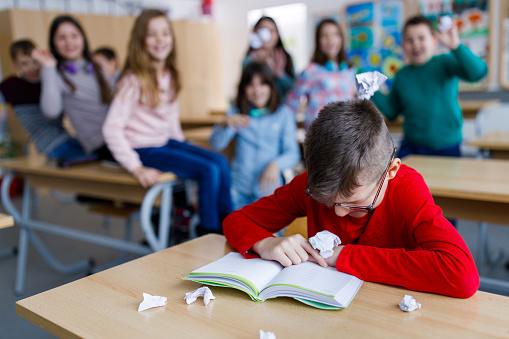School shootings have become a sad reality in Brazil. With the increasing frequency of these horrific events, it is crucial to responsibly understand the reasons behind them and look for ways to prevent them.
You can take a look at the reasons behind school massacres below: Why is the frequency increasing in Brazil? and how easy access to guns, bullying and social networks affects the behavior of thousands of young students.
History of attacks in Brazilian schools
Unfortunately, the attack on Escola Estadual Sapopemba (SP) on October 23 increased the statistics of violence in the Brazilian school environment. Twenty-three years after isolated incidents in the early 2000s, we see that the frequency of school massacres in the country has reached alarming levels.
According to research conducted by the non-profit organization Instituto Sou da Paz, an “X-ray of 20 years of attacks on schools in Brazil” caused damage to Brazil 24 attacks on schools from 2002 to 20 April23, leaving 137 fatal and non-fatal victims.
Public schools are the most affected, with 76% of cases. The study also concluded that “shooting attacks lead to three times more deaths than slashing or stabbing incidents.”
The feeling that assaults in school settings are becoming more frequent is real. Researchers at the Instituto Sou da Paz confirmed an upward trend from 2019. The years 2022 and 2023 alone account for 12 cases, half of these attacks were recorded in 20 years.
The profile of the authors is always the same: the majority (57%) are young, white males still affiliated with the target school. Another important piece of information is about strong evidence. Attacks are planned weeks, even months in advance.
This means there is time before tragedy strikes for the school community and public institutions to intervene and welcome these young people who isolate themselves and turn to violence to cope with low self-esteem and bullying from their classmates.
Daniel Cara, a professor and researcher at the University of São Paulo (USP) School of Education, says that “today’s Brazilian society resembles the worst of the United States society in terms of public safety” (via Extra Classe newspaper).
Scientific research on school massacres in North America is much more numerous than the Brazilian framework. Attacks are increasing in the USA: 377 incidents A quarter of the cases identified by the Washington Post since 1999 occurred between 2021 and 2022.
The authors’ definition is similar; They are mostly white men, there are no records of previous psychotic symptoms, and less than half of the murderers commit suicide after the act.
With each incident that occurs in schools in Brazil, governments are pressured to establish prevention protocols, assign police officers to schools, and develop more effective public policies to prevent new cases. However the problem is much more complex and we will discuss it item by item below!
5 points to consider regarding the increase in violence at school
1) Ease of owning a gun in Brazil
Brazil has a long history of gun violence, and access to such tools is deeply ingrained in its culture. There is an aggravating factor when we look at the school context.
Weapon display began to be seen as a source of prestige among young people with similar profiles as the perpetrators of the attack. In addition, Brazilian legislation, Firearm ownership became more flexible in 2019 under the Bolsonaro government With Decree No. 9.785, the purchasing process was made less bureaucratic.
2) Bullying inside and outside the school environment
Bullying is a form of repetitive harassment that can take different forms, including verbal, social, psychological and, in some cases, physical abuse. The problem is present in many schools in Brazil and is considered by experts to be one of the main causes of attacks.
For psychologist Samantha Froelich, The first point of prevention in this process is the work of the school psychologist.. “The professional can encourage group awareness activities by making space in the school for children to know they can be listened to and helped.”

Additionally, the psychologist can work with teachers, analyze their perceptions in the classroom, greet the student, guide family members, and recommend specific treatments for each case.
However, the presence of psychologists in schools is insufficient in Brazil. According to the Federal Council for Psychology, There is only one psychologist for every 1,853 students in the country in basic education. The lack of mental health professionals in schools is another significant barrier to prevention programs.
3) Hate speech on the internet
Close monitoring by trained professionals is also the best way to prevent elementary and middle school students from falling prey to hate speech on social media. As instigated by neo-Nazi groups.
In an interview with BBC News Brasil, sociologist and director of the Sou da Paz Institute, Carolina Ricardo, emphasizes that the impact of these extremist conversations in online gaming chats is concentrated on people who are cyberbullied or feel excluded from their community. .
Due to the proliferation of social media platforms and the lack of effective regulations in Brazil, Victims cannot escape harassment even at home. Social media has given attackers a new tool to spread hatred and violence.
Therefore, constant exposure to social media can have a negative impact on the mental health of young people, an age group that naturally seeks approval and belonging.
4) Demonstration of crimes by the press
Past cases, such as the tragic incident in Suzano (2019), often serve as inspiration for future attacks. Some people involved in such crimes seek notoriety because extremist communities encourage and glorify such actions.
Many attempt to identify themselves in some way by examining morbid details such as the attacker’s room, text exchanges, and personal objects.
Experts warn against a phenomenon known as the “contagion effect.” When a violent attack on a school becomes widely publicized, This increases the likelihood of similar attacks.

To control this harmful effect, major news networks such as CNN, Band, Grupo Globo and Canal Meio, Do not reveal names, photos or videos Suspects in assault cases.
This measure was adopted only after a tragic incident in April 2023, in which four children died and three others were injured at the Cantinho Bom Pastor nursery in Blumenau (SC).
In Paula Carvalho’s experience, Fabiana Rissato de Paula Carvalho, who has been teaching for 30 years, emphasizes that it is difficult to watch the sad scenes we see over and over again in the media: Feelings of the school community were shaken.
“I only teach in the private education network and, given this situation, took action to avoid and eliminate such cruel attitudes. There were investments in infrastructure (more emergency exits, electric fencing), the recruitment of security guards located around the school at the time, all employees and training mental detectors. School is more like a prison,” shares Carvalho.
How can parents and teachers recognize the signs?
Preventing massacres in schools is not only the responsibility of educational institutions and public institutions. Family members, teachers, pedagogues and administrators also play a fundamental role in this process.
It’s vital to recognize the warning signs and take action early Identify at-risk students and seek appropriate help. Here are some ways the school community can play this lifesaving role:
- Watch for behavioral changes in students, such as social isolation, unusual aggression, decreased school performance, sleep and appetite disturbances;
- Maintaining an open and friendly channel of communication with young people, listening to their concerns and showing genuine interest;
- Educate yourself about bullying by seeking information on how to recognize different types of bullying and how to be aware of signs that a student is being bullied;
- Promote empathy through peaceful conflict resolution, discussions of mutual respect, and teaching social skills;
- If you are suspicious of a student’s behavior, seek help from a mental health professional such as a psychologist or psychiatrist;
- Be careful about social media use. Online games, forums and chats on social networks are often a meeting point for extremists and grooms;
- Learn about violence and bullying prevention programs established by the Department of Education and State Department of Education in your area;
- Participate in actions to instruct people to refrain from spreading rumors and messages of unknown origin to prevent panic in schools;
- Working as a team. Communication between parents and teachers is very important.
Through coordinated efforts between government, schools, families and organizations, We can work together to prevent massacres Protect our children and young people in schools. It’s complex, but it’s a challenge we can’t ignore because the future of youth is at stake.
Source: Tec Mundo
I am a passionate and hardworking journalist with an eye for detail. I specialize in the field of news reporting, and have been writing for Gadget Onus, a renowned online news site, since 2019. As the author of their Hot News section, I’m proud to be at the forefront of today’s headlines and current affairs.











